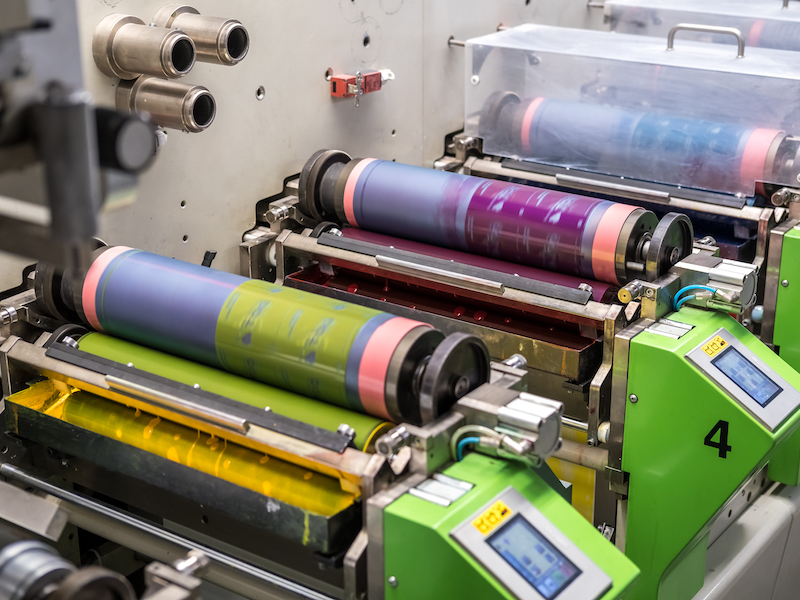The history of flexographic printing is a fascinating journey through technological advancements and creativity. As we delve into this topic, it quickly becomes apparent how this printing method has transformed over the years to meet the demands of changing industries. Nowadays, understanding the evolution of flexographic printing is crucial, especially for marketing professionals seeking to utilize this efficient printing technology effectively.
Flexographic printing, commonly known as flexo, utilizes a flexible relief plate. It is fundamentally known for printing high volumes of labels, packaging, and corrugated containers. From its origins to modern-day applications, the journey of flexographic technology reflects significant enhancements in quality, speed, and versatility. Exploring this evolution not only offers insight into its historical significance but also provides marketing professionals with a deeper comprehension of how this print standard has adapted to current and future needs. For comprehensive insights into flexography, you can refer to Focus Label’s detailed blog.

Early Beginnings and Innovations
The Origins of Flexographic Printing
Initially known as aniline printing, the earliest beginnings of flexographic printing can be traced back to the late 19th century. During this time, the printing method utilized water-based, aniline dyes as ink, which later gave it the name ‘aniline printing.’ The simplicity of the flexographic process, paired with its cost-effectiveness, garnered attention from packaging industries seeking new methods to print designs efficiently.
Transition to Safer Materials
As flexographic printing gained popularity, so did concerns about the safety of aniline inks. The industry sought safer alternatives, leading to the development of non-toxic, rubber-based inks, thereby broadening the printing method’s applicability. This shift played a pivotal role in the printing press’s widespread adoption, helping it gain a reputation for reliability and safety.
Technical Advancements
The Role of Photopolymer Technology
The late 20th century marked significant advancements with the introduction of photopolymer technology, revolutionizing the printing process. Photopolymer plates enhanced print clarity and durability, making flexographic printing more competitive in quality with other printing standards such as lithography and gravure. This innovation underscored the printing method’s adaptability to technological changes.
Computer-to-Plate (CTP) Technology
The arrival of Computer-to-Plate technology was another milestone in the flexographic printing journey. CTP improved the precision and speed of plate production, ensuring consistency across print runs. This advancement brought immense flexibility to the industry, paving the way for the seamless integration of digital processes in printing. For more on phosphor plates’ application, see additional insights here.
Application and Impact
Printing on Diverse Materials
Today’s flexographic printing supports a range of materials, from plastic films and foil to paper and cardboard. This method’s adaptability to various substrates pushed its emergence as the go-to printing choice for packaging industries. The ability to produce continuous patterns also supports different commercial applications.
Environmental Considerations
As industries increasingly focus on sustainability, flexographic printing has adapted to environmental considerations. With the use of water-based, solvent-free inks, it stands out as one of the eco-friendlier options in modern printing. The drive towards sustainability has motivated continual innovation aimed at reducing waste and resource consumption.
Present and Future of Flexographic Printing
Integration with Digital Technologies
The synergy between flexographic and digital printing technologies offers exciting future possibilities. This convergence facilitates producing variable data prints and personalized designsattributes highly sought after in today’s marketing campaigns. The blending of these technologies is anticipated to expand the creative potential and efficiency of printing operations.
Future Trends and Innovations
As automation and artificial intelligence become increasingly pertinent in manufacturing and marketing, flexographic printing is poised to evolve further. Future trends might include smarter presses and real-time quality monitoring systems, paving the way for enhanced production throughput.
Conclusion: A Resilient Print Standard
The history of flexographic printing showcases a robust print standard, adept at evolving alongside industrial needs and emerging technologies. It promises continued relevance and transformation in the future. Marketing professionals can leverage these insights to align their strategies with innovative print solutions, preparing for upcoming demands and advancements.

FAQ
What industries benefit most from flexographic printing?
Flexographic printing is especially beneficial for industries focused on packaging. This includes food and beverages, pharmaceuticals, and cosmetics, where high-volume, high-speed print runs are paramount.
Is flexographic printing environmentally friendly?
Yes, it is. With the use of water-based, low-VOC inks, flexographic printing is known for its minimal environmental impact. Innovations also continue to drive eco-friendly initiatives within this printing domain.
How does digital technology enhance flexographic printing?
Digital technology enhances flexographic printing by enabling more precise and quicker plate production, variable data printing, and personalization, effectively catering to modern marketing demands.






